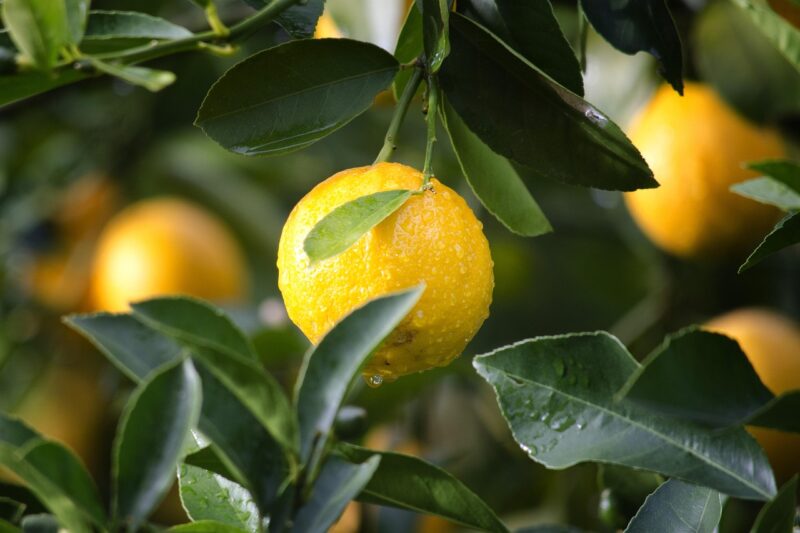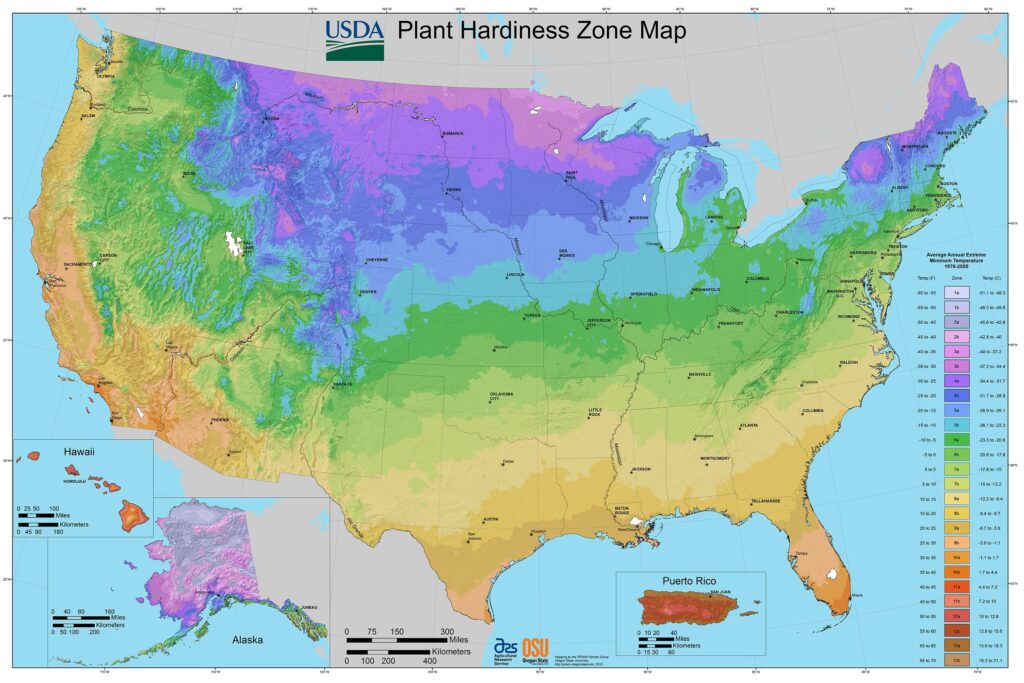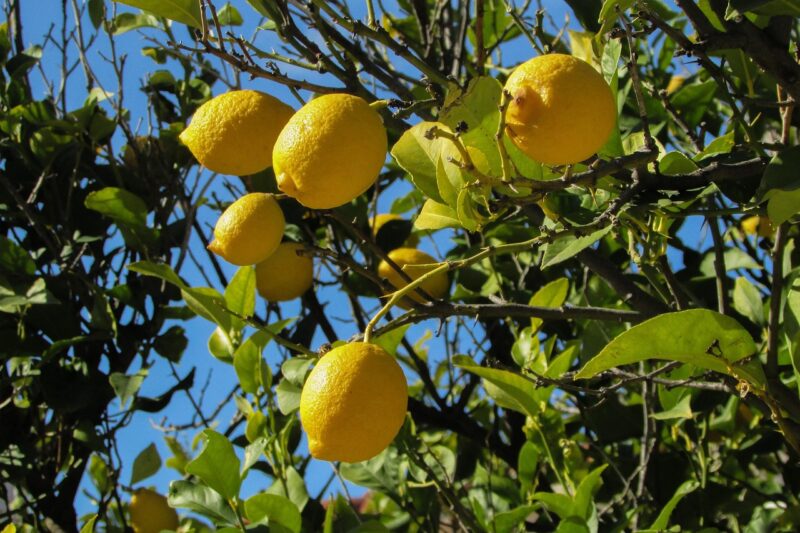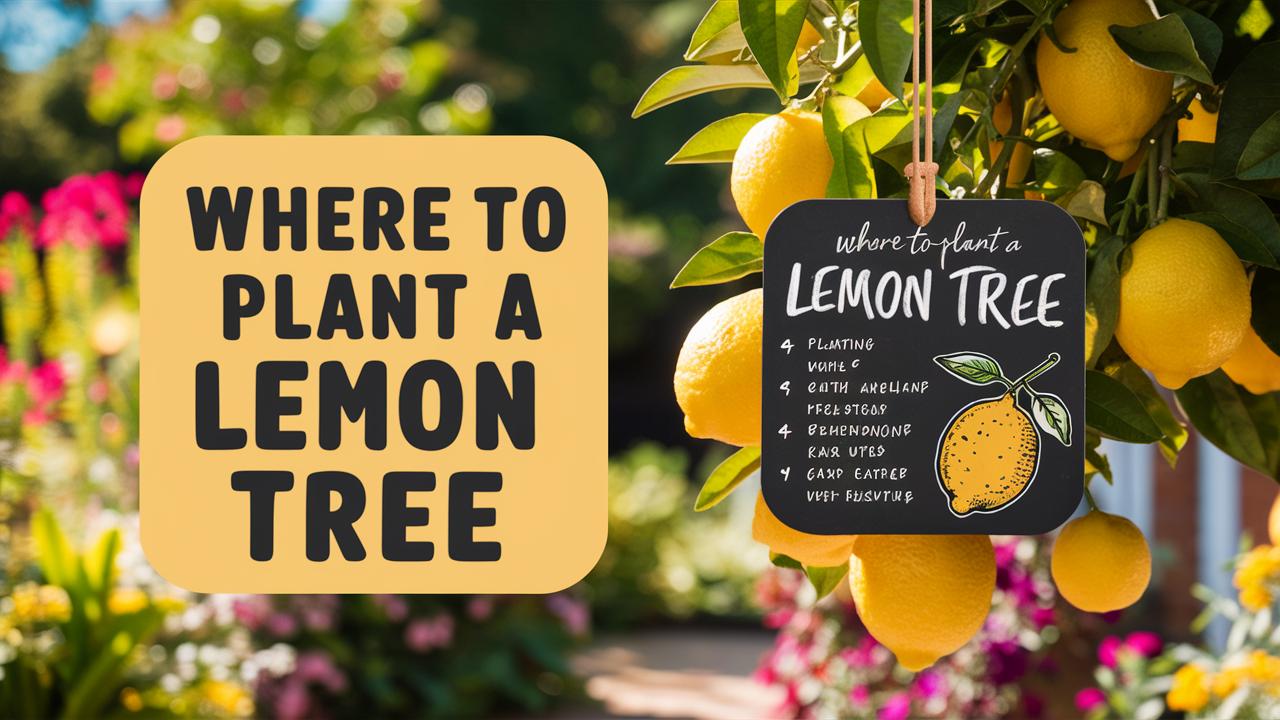In this guide, we’ll explore various factors to help you choose the perfect spot for your lemon tree.
Understanding Lemon Tree Varieties and Their Growth Needs

Before diving into the specifics of planting locations, it’s essential first to understand the types of lemon trees available. The two most common types are the Eureka and Lisbon varieties, both of which bear fruit year-round. Another popular option is the Meyer lemon tree, which produces sweeter fruit and is slightly smaller, making it suitable for container gardening as well.
Regardless of the variety you choose, all lemon trees thrive in similar conditions. They require full sun, well-draining soil, and protection from prolonged cold. Understanding these needs will guide you in determining the best planting location.
Considering Climate and Weather

One of the most critical factors in deciding where to plant a lemon tree is your local climate. Lemon trees flourish in USDA hardiness zones 9 to 11. If you live in a climate that experiences frost or extreme temperature fluctuations, thoughtful placement becomes even more important.
Temperature Needs: Lemon trees thrive in temperatures between 70°F and 85°F. In cooler climates, it’s wise to plant in a sheltered area, such as near a south-facing wall, which can reflect warmth.
Frost Protection: If you experience frosts, it’s vital to plant your lemon tree away from wind-swept areas. A location that offers some natural wind barriers, such as fences or buildings, can protect young trees from cold winds and frosts.
Microclimates: Understanding microclimates in your yard can give you an edge. Warm spots, such as patios or those close to heat-retaining structures, can provide an environment conducive to growth.
Sunlight Requirements: A Critical Consideration

Lemon trees are sun-loving plants that require at least 8 to 10 hours of direct sunlight each day. When selecting a planting location, consider these key aspects:
Positioning: The best location is one that does not have any overhanging trees or structures casting shadows, as this will inhibit growth and fruit production. If you have limited space, think about vertical growth – a trellis or fence that gets ample sun or planting in a sunny south-facing corner can work wonders.
Seasonality of Sunlight: The angle of the sun changes throughout seasons. Make sure your selected spot remains sunny in different seasons. For instance, winter sunlight is lower, which could mean that trees or structures you thought would provide shade in the summer may obstruct sunlight in the colder months.
Soil Composition: Preparing the Ground

Well-draining soil is fundamental for lemon trees since they are sensitive to waterlogged roots. The perfect soil is slightly acidic to neutral (pH 5.5 to 6.5). Before planting, conduct a soil test to determine existing pH levels and nutrient content.
Amending Soil: If your soil is heavy clay or too sandy, amend it with organic matter, compost, or well-rotted manure to improve structure and drainage. This encourages root growth and nutrient absorption.
Raised Beds or Containers: In cases where the existing soil is unsuitable, consider raised beds or planting in containers filled with a good potting mix. Container gardening is especially beneficial for those in colder climates, allowing you to bring your lemon tree indoors during winter.
Drainage Considerations: Keeping Roots Healthy
Good drainage is an essential aspect of where you plant a lemon tree. To prevent root rot, make sure the area you select has:
Slope or Elevation: Areas that naturally slope can improve drainage. If your yard is flat, consider creating raised beds for better water runoff.
Avoiding Low Spots: Refrain from planting in low-lying areas where water can accumulate. Observe the space after rain to ensure it does not collect water excessively.
Spacing and Location in the Garden

Space requirements for lemon trees vary based on variety, but generally, they need about 15 to 25 feet of space between them and other trees or structures. Crowding can lead to poor air circulation, increasing the risk of diseases.
Group Planting: If you are interested in planting multiple lemon trees, balance their spacing based on growth size when fully matured. This allows each tree to thrive without competing for resources.
Companion Planting: Consider companions like marigolds, which can deter pests, or aromatic herbs that can enhance aroma in your garden and deter harmful insects while drawing pollinators.
Indoor Growing: Planting Inside Your Home
If you’re not fortunate enough to live in a warm, sunny climate year-round, or if you have limited outdoor space, you might consider growing a lemon tree indoors. Here are some best practices for indoor planting:
Choosing the Right Container: Ensure the pot has adequate drainage holes. A pot that is about 12 inches wide and 12 inches deep is a good starting point for smaller varieties like Meyer lemons.
Light Source: Place your indoor lemon tree near a south-facing window where it can receive adequate sunlight. If natural light is insufficient, consider investing in grow lights to mimic sunlight.
Humidity Levels: Indoor environments can be quite dry, particularly in winter. Regular misting or placing a pebble tray filled with water beneath the pot can improve humidity.
Seasonal Considerations: Timing Your Planting

Timing is another vital element to consider when planting a lemon tree. Planting when the conditions suit both the tree and your local environment can set it up for future success.
Best Planting Season: Early spring or fall is typically the best time to plant lemon trees. In spring, growth dynamics favor their establishment, while planting in the fall allows roots to settle in before winter.
Observing Local Frost Dates: Keep your local frost dates in mind, especially if you’re planting in the ground. Planting a few weeks prior to the frost-free date can help the tree establish before temperatures drop.
Maintenance Beyond Planting: Long-Term Care

Planting is just the beginning; ensuring your lemon tree thrives takes ongoing care. Certain long-term considerations will play a role in the success of your tree.
Watering Schedule: Lemon trees prefer deep watering but less frequent overall to allow the roots to stretch and anchor into the soil. This water management will differ based on your climate, so adjust accordingly.
Fertilizing: Use a balanced fertilizer high in nitrogen during the growing season. Citrus-specific fertilizers can offer the nutrients lemon trees specifically crave.
Mulching: Adding organic mulch can help retain moisture, provide nutrients over time, and control weeds that compete with your tree for resources.
Pruning for Health: Regular pruning helps maintain an open canopy for light and air circulation while removing any dead or diseased branches.
Troubleshooting: Common Challenges
Even with the best-planning efforts, problems can arise. Knowing common issues and challenges can help you address them promptly.
Pests and Diseases: Watch for signs of pests such as aphids or spider mites. Regular inspections can help you catch infestations early. Use insecticidal soap or neem oil to control pest populations.
Yellowing Leaves: If you notice your lemon tree’s leaves turning yellow, this could be a sign of overwatering, nutrient deficiencies, or pests. Assess your watering routine and check the soil for pests.
Fruit Drop: If your tree drops its fruits prematurely, this may be due to stressors such as over- or underwatering, swinging temperatures, or lack of nutrition. Make adjustments to promote stability.
Conclusion: Your Lemon Tree Journey Begins
Planting a lemon tree is an exciting venture that brings the prospect of delicious, home-grown fruit into your life. By choosing the right location—taking into account climate, sunlight, soil conditions, and ongoing care—you set the stage for a thriving lemon tree.





